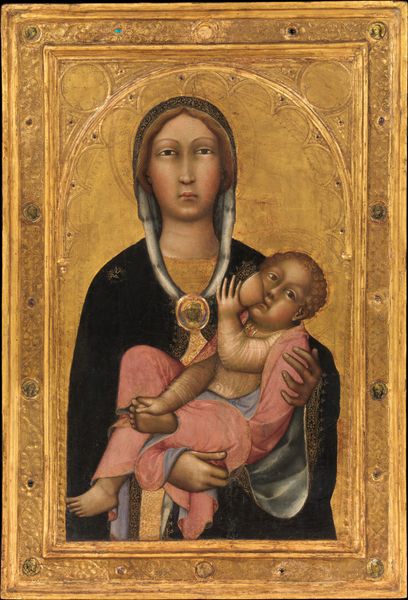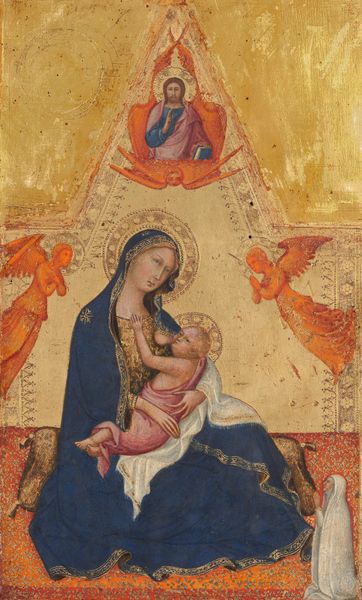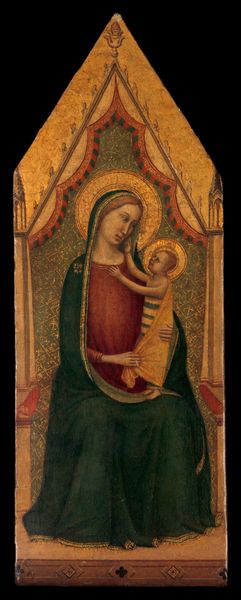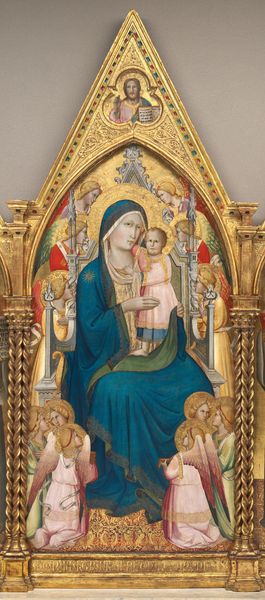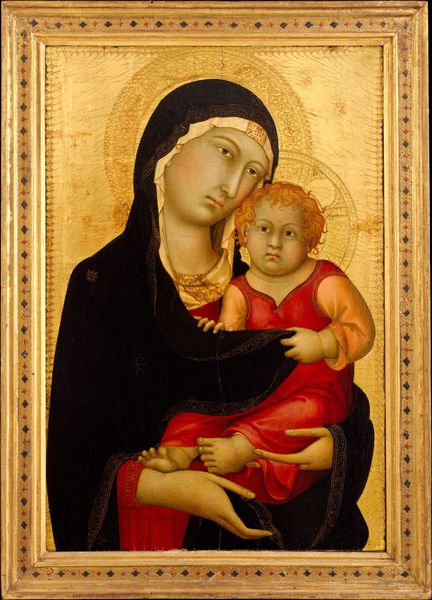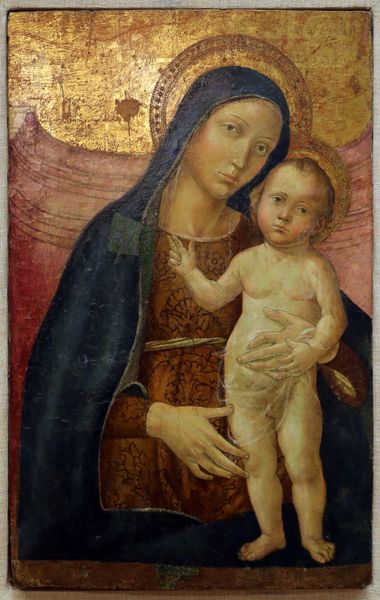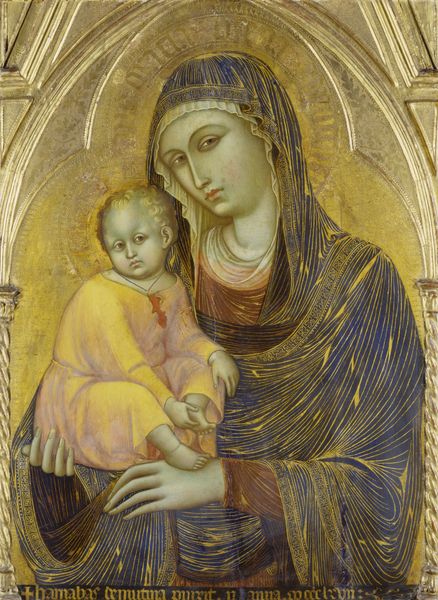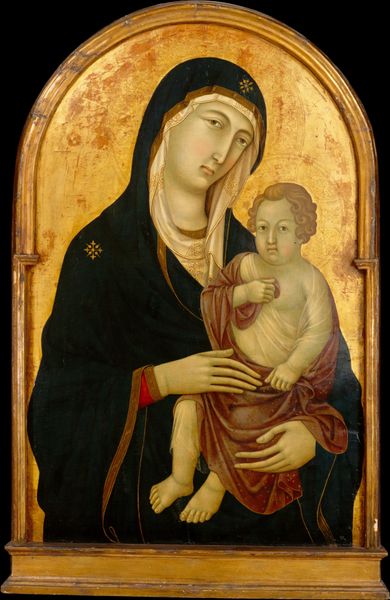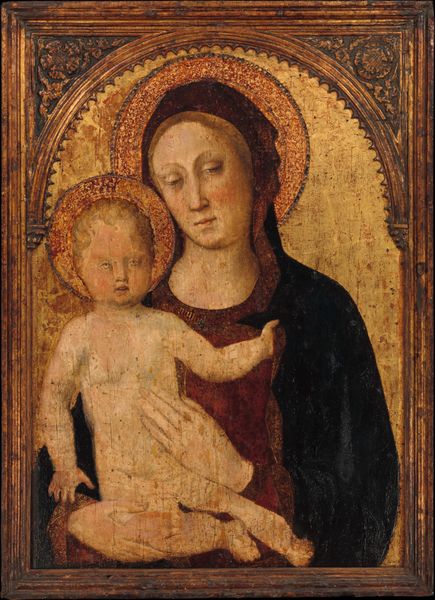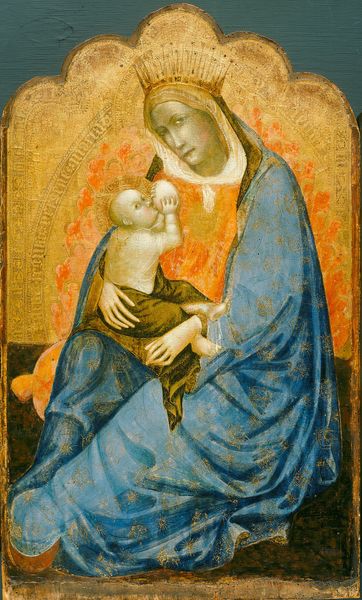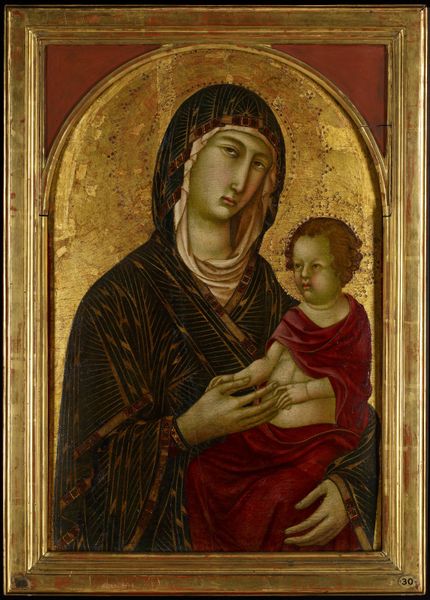
Madonna and Child with God the Father Blessing and Angels c. 1370 - 1375
0:00
0:00
tempera, painting
#
portrait
#
medieval
#
tempera
#
painting
#
figuration
#
oil painting
#
painting painterly
#
history-painting
#
italian-renaissance
Dimensions: painted surface: 139.8 × 67.5 cm (55 1/16 × 26 9/16 in.) overall: 141.2 × 69 × 1.5 cm (55 9/16 × 27 3/16 × 9/16 in.) framed: 156.8 x 84.1 x 6.7 cm (61 3/4 x 33 1/8 x 2 5/8 in.)
Copyright: National Gallery of Art: CC0 1.0
Jacopo di Cione painted this panel of the Madonna and Child, likely in Florence, using tempera on wood. The entire surface is built from the ground up. The wood panel was carefully prepared with gesso, a white coating made from animal glue and chalk, to create a smooth, absorbent surface for painting. The application of gold leaf, especially in the background, was a painstaking process, adhering delicate sheets of gold to the prepared surface using a sticky mordant. The tempera paint itself was made by mixing pigments with egg yolk, resulting in a fast-drying, luminous finish. The artist would build up layers of translucent color to create depth and detail. The emphasis is on the flatness of the gilded surface rather than the three-dimensionality. It speaks to a patron who valued not just the image but the costly materials that went into it. It’s easy to see the connection of the work to the social and economic realities of its time.
Comments
No comments
Be the first to comment and join the conversation on the ultimate creative platform.
